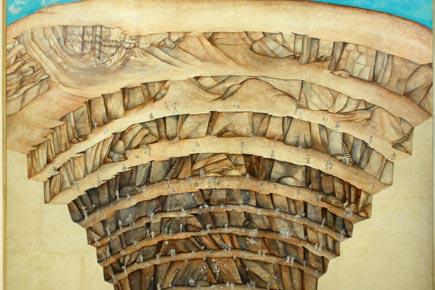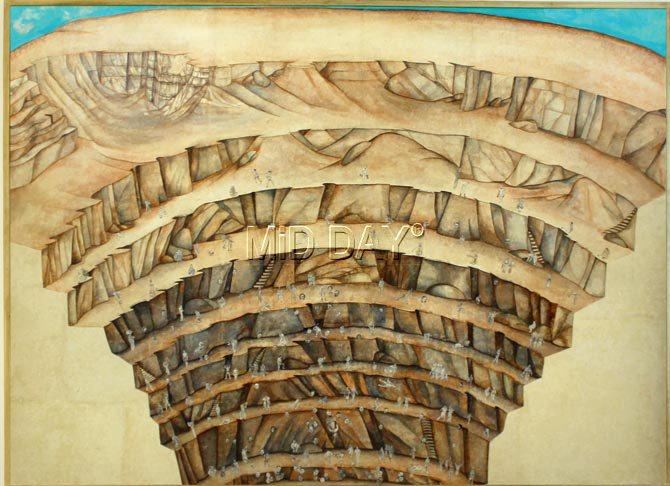An ongoing exhibition looks at the blurring of lines between art and cartography


The Map of Pain by Varunika Saraf (2017). Pic/Sakshi Gallery
ADVERTISEMENT
In Varunika Saraf's The Map of Pain, a watercolour on paper work completed in 2017, the artist marks traumatic events in a manner that is reminiscent of Botticelli's vision of hell. An angel, much like Paul Klee's monoprint, Angelus Novus, falls into the pit. Saraf's work is part of an exhibition curated by art critic Meera Menezes, where artists take on the role of cartographer as they map times, spaces, human bodies, histories and even memories.

Curator Meera Menezes. Pic/Bipin Kokate
Menezes calls the exhibition 'Here Be Dragons and Other Coded Landscapes', a title that brings to the manner in which medieval European cartographers denoted unchartered and potentially dangerous territories. The latter half of the title is drawn from a talk by artist Nilima Sheikh, whose work is also part of this exhibition. The exhibit brings together both new and older works by artists across two generations. Menezes says, "The topic of cartography has come up often in recent discourse due to political urgency, border tension and the refugee crisis. With its complex weave of lines and coded symbols, the map is one such device, which offers a way to chart territories, makes linkages between disparate places and times and in the process generates new meanings."
"The artists in this exhibition use the motif of maps in a variety of ways, right from showing physical spaces, as Raj Jariwala does, to emotions, as Sheikh does in her work Majnun," she adds. Elaborating on this, she evokes the works of Zarina Hashmi, Indian-born and now New York-based, who evokes the notion of homeland in her works, mapping at once geography, longing and loss.
 Subscribe today by clicking the link and stay updated with the latest news!" Click here!
Subscribe today by clicking the link and stay updated with the latest news!" Click here!






